As ASHRAE seeks to expand its mission around the globe, the ASHRAE Bookstore continues to add to its selection of other language publications. Order a print edition and receive your shipment via mail, or purchase a downloadable digital version for instant access to the tools you need.
Browse the ASHRAE Bookstore's complete selection of other language-books and other-language standards
Books
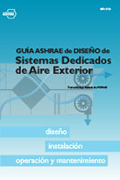
ASHRAE Design Guide for Dedicated Outdoor Air Systems
Dedicated outdoor air systems (DOAS) are growing in popularity, but are still a relatively new technology. ASHRAE Design Guide for Dedicated Outdoor Air Systems (DOAS) offers comprehensive guidance from industry experts to simplify DOAS design, installation, operation, and management.
Available in Spanish or English
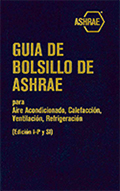
ASHRAE Pocket Guide for Air-Conditioning, Heating, Ventilation and Refrigeration, 8th Ed. (I-P and SI)
This reference provides fast, authoritative HVAC&R information on the spot. This edition includes properties performance and pipe sizing for new refrigerants, new data on refrigeration safety, ventilation requirements for residential and non-residential occupancies, occupant thermal comfort, more extensive data on sound and vibration control, thermal storage, radiant panel heating and cooling, air-to-air recover and more.
Available in Spanish or English
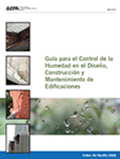
EPA Guidance - Moisture Control Guidance for Building Design, Construction and Maintenance
Moisture control is fundamental to the proper functioning of any building. Controlling moisture is important to protect occupants from adverse health effects and to protect the building, its mechanical systems and its contents from physical or chemical damage.
Available in Spanish or English
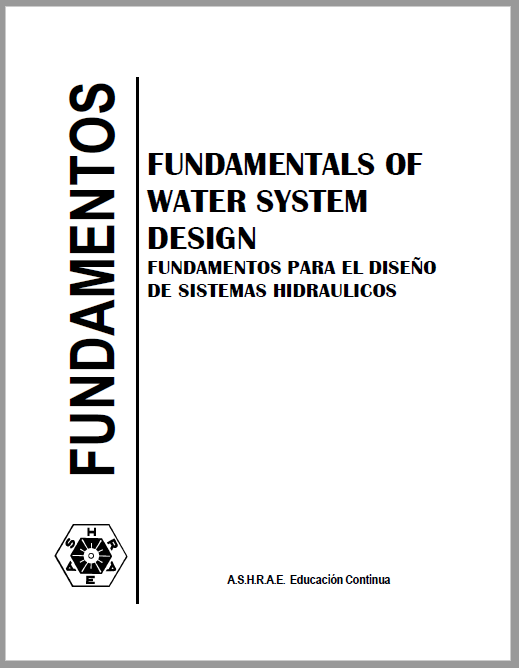
Fundamentals of Water System Design (I-P), First Edition
Water, or hydronic, systems are a key foundation technology of HVAC system design. They represent an important tool in the designer's toolbox for providing effective and efficient HVAC systems to buildings around the world. Fundamentals of Water System Design is an entry-level text on the principles of hydronic HVAC system design and calculations. The fundamentals presented in this text can be used to successfully design the modern hydronic system, and they provide an equally sound footing for work in hydronic system commissioning, operation, and troubleshooting. Each chapter of this course book includes detailed diagrams, examples, and calculations, plus exercises at the end of each chapter to develop skills in using the knowledge provided.
Available in Spanish
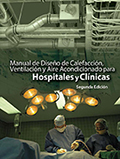
HVAC Design Manual for Hospitals and Clinics, 2nd Ed.
Health care HVAC systems serve facilities in which the population is uniquely vulnerable and exposed to an elevated risk of health, fire, and safety hazard. These heavily regulated, high-stakes facilities undergo continuous maintenance, verification, inspection, and recertification, typically operate 24/7, and are owner occupied for long life.
Available in Spanish or English
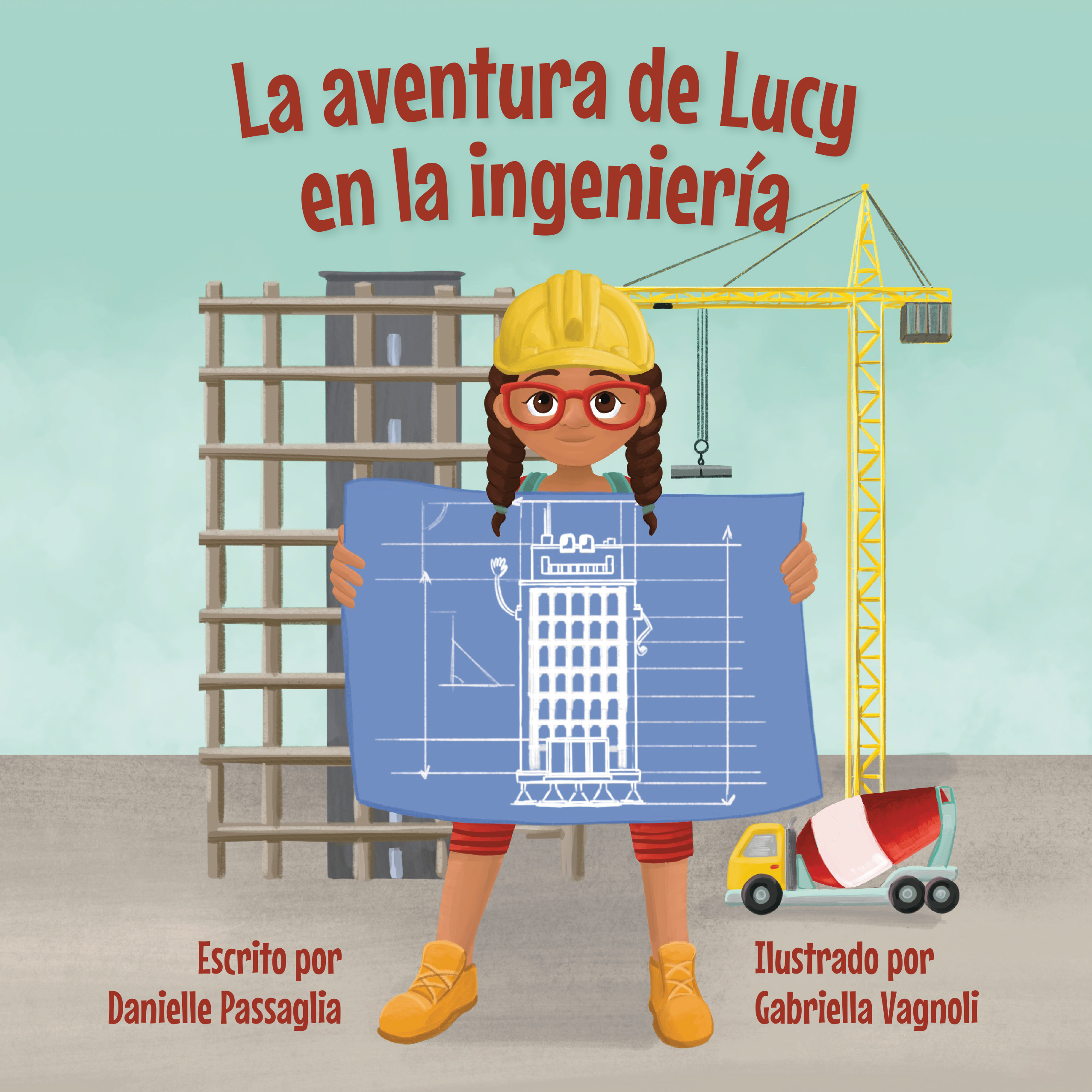
Lucy’s Engineering Adventure
This rhyming picture book introduces children to building and HVAC engineering through a young girl's visit to an unfinished building, where her father uses a metaphor of the human body to explain the building's beams and columns, electrical system, and HVAC ducts. Lucy's curiosity is encouraged by her father throughout.
Available in Spanish or English
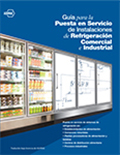
Refrigeration Commissioning Guide for Commercial and Industrial Systems
provides guidance to owners and managers of commercial and industrial facilities that use refrigeration systems to help ensure that project requirements are met and owners' expectations are achieved. For commercial facility owners and managers, this means improved profitability through lower operating and service costs as well as reduced product loss.
Available in Spanish or English
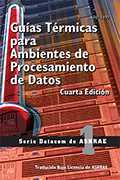
Thermal Guidelines for Data Processing Environments, 4th Ed.
IT equipment environmental requirements are often mismatched with adjacent equipment requirements or with facility operating conditions. How can HVAC equipment manufacturers and installers, data center designers, and facility operators find common solutions and standard practices that facilitate IT equipment interchangeability while preserving industry innovation?Thermal Guidelines for Data Processing Environments provides a framework for improved alignment of efforts among IT equipment hardware manufacturers.
Available in Spanish or English
| return to top
Standards and Guidelines
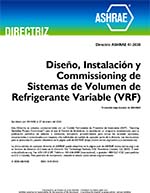
Guideline 41-2020 -- Design, Installation and Commissioning of Variable Refrigerant Flow (VRF) Systems
Guideline 41 provides information and guidance on the design, installation, and commissioning of variable refrigerant flow (VRF) systems beyond that found in ASHRAE Handbook HVAC—Systems and Equipment.
Available in Spanish or English
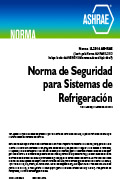
Standard 15-2016 - Safety Standard for Refrigeration Systems
ASHRAE Standard 15 establishes safeguards for life, limb, health, and property and prescribes safety requirements. This standard is directed toward the safety of persons and property on or near the premises where refrigeration facilities are located. It includes specifications for fabrication of tight systems but does not address the effects of refrigerant emissions on the environment.
Available in Spanish or English
2007 translation also available
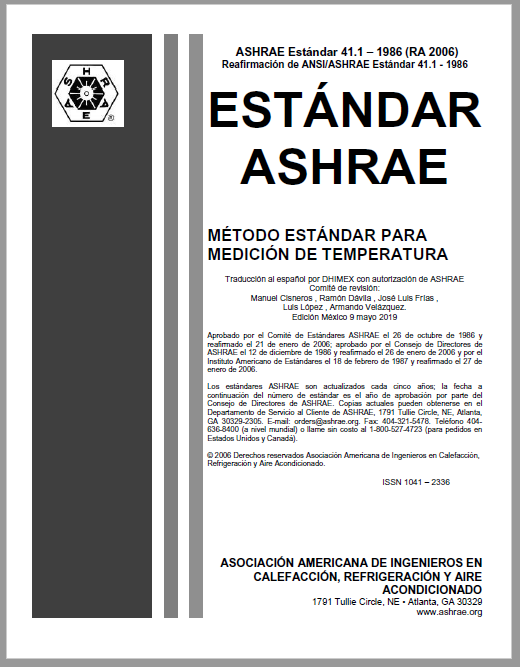
Standard 41.1-1986 (RA 2006), Standard Methods for Temperature Measurement
This standard was written to establish methods of temperature measurement that provide consistent procedures that may be referenced in other ASHRAE standards. There were no changes made for the 2006 reaffirmation. The purpose of this standard is to set forth recommended practices for temperature measurements and provide adequate and consistent measurement procedures for reference in other standards. The procedures described herein are intended for use in testing heating, refrigerating, and air-conditioning equipment and components. The media in which temperature measurements are made include air, water, brine, and volatile or nonvolatile refrigerants, under both steady-state and transient temperature conditions between -40ºF and 400ºF (-40ºC and 204ºC).
Available in Spanish or English
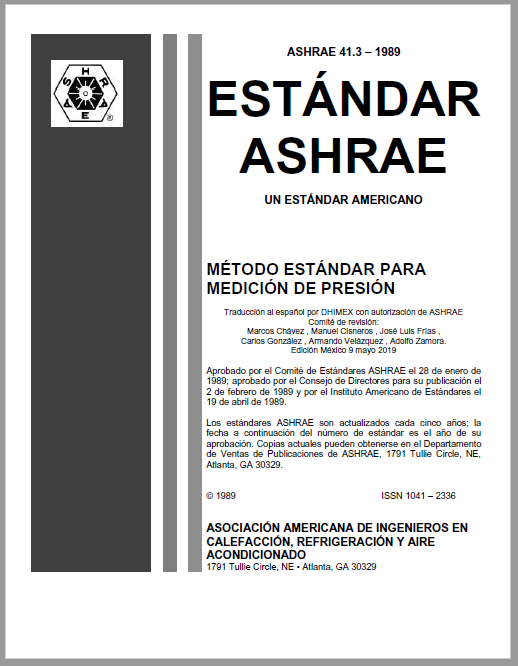
Standard 41.3-1989, Standard Methods for Pressure Measurement
This standard presents recommended practices and procedures for accurately measuring steady-state, nonpulsating pressures. The scope of this standard is to describe methods for measurement of pressures appropriate for use in other ASHRAE standards, limited to the I psia (6.9 kPa) to 500 psia (3450 kPa) range. The descriptions include: type of pressure, range of suitable application, expected accuracy, and proper installation and operation techniques for attaining the desired accuracy. Pressure devices include: differential pressure (head) meters, elastic element (bellows, Bourdon tube and diaphragm sensor) gages, manometric gages; and pressure-spring gages. Reference to suitable ANSI/ASME and ISA/ANSI standards is used where appropriate.
Available in Spanish or English
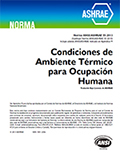
Standard 55-2017 - Thermal Environment Conditions for Human Occupancy
Standard 55 specifies conditions for acceptable thermal environments and is intended for use in design, operation, and commissioning of buildings and other occupied spaces. The 2017 edition of ANSI/ASHRAE Standard 55 incorporates seven published addenda to the 2013 edition, and provides three compliance methods: a graphic method for simple situations, an analytical method for more general cases and a method that uses elevated air speed to provide comfort. The standard has a separate method for determining acceptable thermal conditions in occupant-controlled naturally conditioned spaces. Given the widespread and easy accessibility of computing power and third-party implementations of the analytical method, it is expected that more users will favor the comprehensive analytical methods over the graphical method.
Available in Spanish or English
2013 translation also available
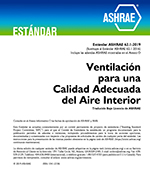
Standard 62.1-2019 - Ventilation for Acceptable Indoor Air Quality
First published in 1973as Standard 62, Standard 62.1 specifies minimum ventilation rates and othermeasures for new and existing buildings that are intended to provide indoor airquality that is acceptable to human occupants and that minimizes adverse healtheffects.
The revised 2019 edition of the standardincludes significant changes, including:
- New informative tables of ventilation rates per unit areafor checking new and existing buildings ventilation calculations
- Simplified version of the Ventilation Rate Procedureimproving calculations for system ventilation efficiency and zone airdistribution effectiveness
- Modified Natural Ventilation Procedure calculationmethodology
- Revised scope to specifically identify occupanciespreviously not covered
Available in Spanish or English
2016 translation also available
2007 Translation also available
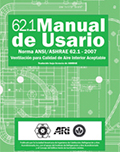
Standard 62.1-2007 User's Manual
The detailed information, figures, and examples contained within this User's Manual are provided to aid the user in designing, installing, and operating buildings in accordance with Standard 62.1-2007.
Available in Spanish or English
Translation of Standard 62.1-2007 also available
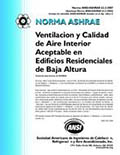
Standard 62.2-2007 - Ventilation and Acceptable Indoor Air Quality in Low-Rise Residential Buildings
This standard defines the roles of and minimum requirements for mechanical and natural ventilation systems and the building envelope intended to provide acceptable IAQ in low-rise residential buildings.
Available in Spanish or English
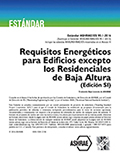
Standard 90.1-2016 - Energy Standard for Buildings Except Low-Rise Residential Buildings
This 2016 edition comprises numerous energy-saving measures and incorporates changes from more than 125 addenda.
Available in Spanish or English
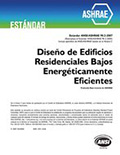
Standard 90.2-2007 - Energy Efficient Design of Low-Rise Residential Buildings
The purpose of this standard is to provide minimum requirements for the energy-efficient design of residential buildings.
Available in Spanish or English
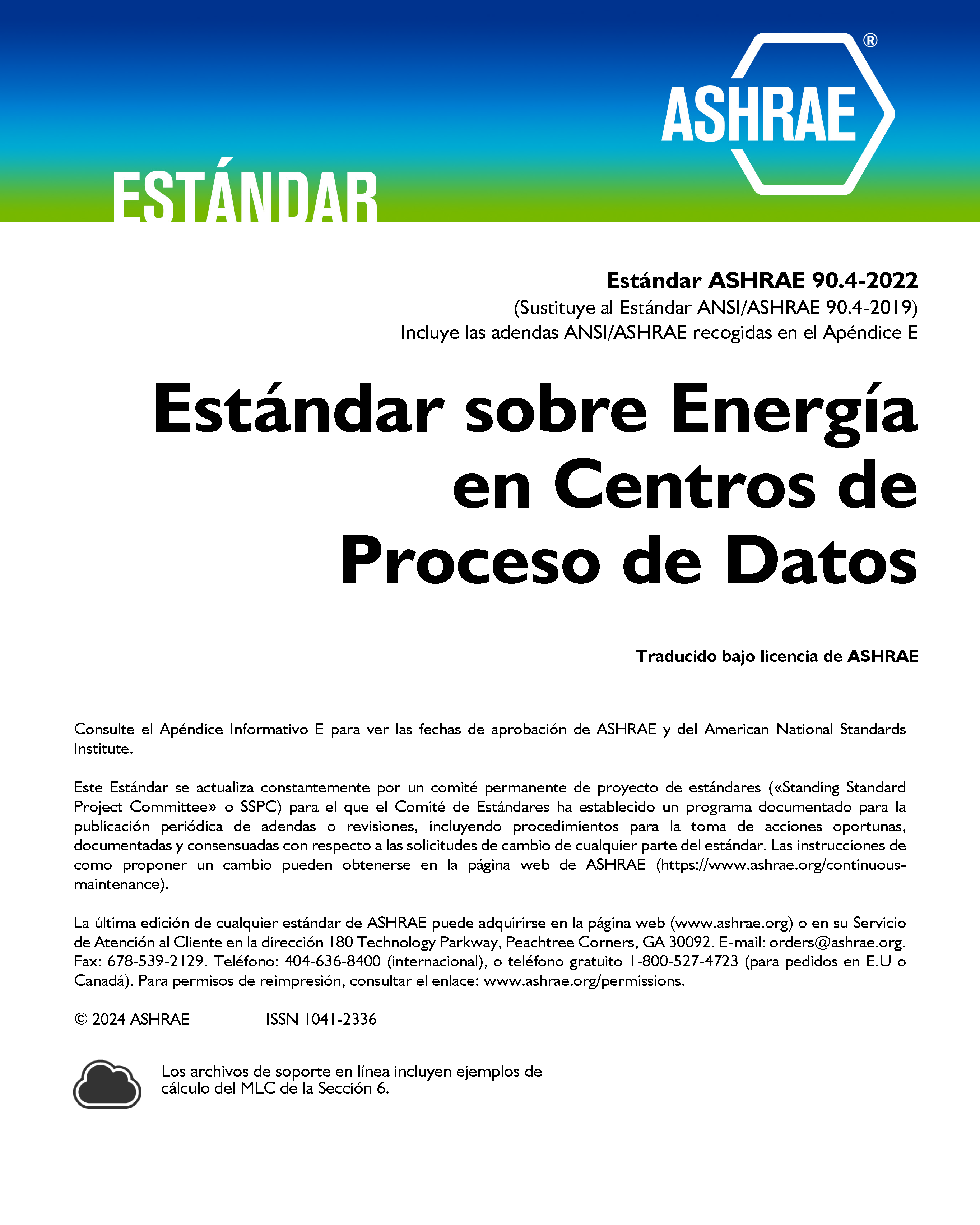
Standard 90.4-2022, Energy Standard for Data Centers
Standard 90.4 establishes the minimum energy efficiency requirements of data centers for design, construction, and operation and maintenance, and use of on-site or off-site renewable energy resources.
The standard was developed to be code-intended, similar to Standard 90.1, and Standard 90.4 references Standard 90.1 for building envelope, service water heating, lighting, and other equipment criteria.
Available in Spanish or English
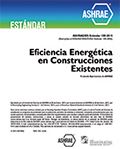
Standard 100-2015 -- Energy Efficiency in Existing Buildings
The 2015 edition of Standard 100 provides comprehensive and detailed descriptions of the processes and procedures for the retrofit of existing residential and commercial buildings in order to achieve greater measured energy efficiency.
Available in Spanish or English
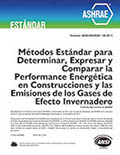
Standard 105-2014 - Standard Methods of Determining, Expressing, and Comparing Building Energy Performance and Greenhouse Gas Emissions
This standard provides a method of energy performance determination, expression, and comparison in mandatory language that can be applied to any building.
Available in Spanish or English
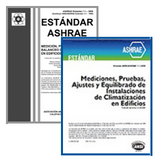
Standard 111-2008 - Testing, Adjusting, and Balancing of Building HVAC Systems
This Standard provides uniform procedures for measurement, testing, adjusting, balancing, evaluating, and reporting the performance of building heating, ventilating, and air-conditioning systems in the field.
Available in Spanish from ASHRAE Spain Chapter or DHIMEX or in English
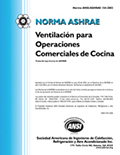
Standard 154-2003 - Ventilation for Commercial Cooking Operations
This Standard provides design criteria for the performance of commercial cooking ventilation systems.
Available in Spanish or English
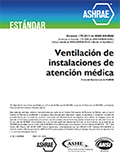
Standard 170-2013 - Ventilation of Health Care Facilities
First and foremost a mandatory minimum requirement, this standard is one of a family of documents that offers guidance, regulation, and mandates to designers of health care facilities.
Available in Spanish or English
2008 translation also available
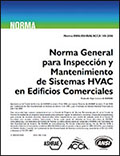
Standard 180-2008 - Standard Practice for Inspection and Maintenance of Commercial Building HVAC Systems
This standard establishes minimum HVAC inspection and maintenance requirements that preserve a system's ability to achieve acceptable thermal comfort, energy efficiency, and indoor air quality in commercial buildings.
Available in Spanish or English
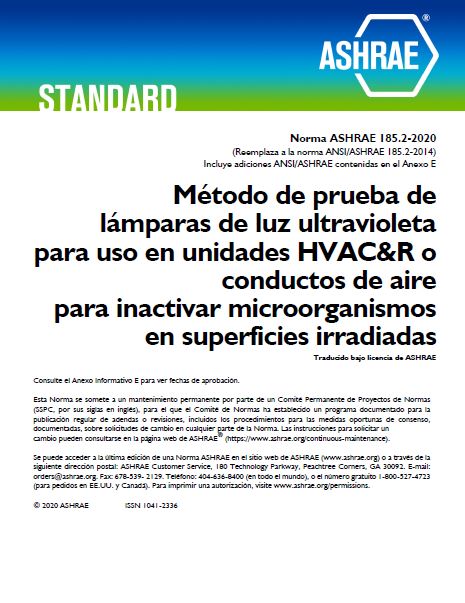
Standard 185.2-2020 - Method of Testing Ultraviolet Lamps for Use in HVAC&R Units or Air Ducts to Inactivate Microorganisms on Irradiated Surfaces
Standard 185.2 establishes a test method to measure the intensity of ultraviolet (UV-C) lamps on irradiated surfaces under typical HVAC&R operating conditions. It also defines methods of calculating and reporting results obtained from the test data. This 2020 revision of Standard 185.2 includes a change to the airflow for the measurements.
Available in Spanish or English
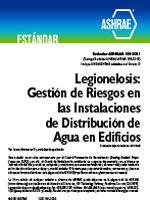
Standard 188-2021 - Legionellosis: Risk Management for Building Water Systems
Standard 188 is essential for anyone involved in the design, construction, installation, commissioning, operation, maintenance, and service of centralized building water systems and components.
Available in Spanish or English
2018 translation also available
2015 translation also available
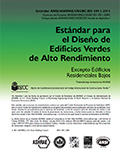
Standard 189.1-2011 - Standard for the Design of High-Performance Green Buildings
Standard 189.1 provides a "total building sustainability package" for those who strive to design, build and operate green buildings.
Available in Spanish or English
2009 translation also available
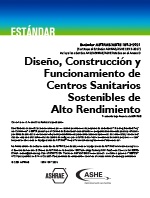
Standard 189.3-2021 - Design, Construction, and Operation of Sustainable High-Performance Health Care Facilities
ASHRAE/ASHE Standard 189.3 prescribes procedures, methods, and documentation requirements for the design, construction, and operation of high-performance, sustainable health care facilities.
This standard builds on the work of Standard 189.1 to address sustainability in health care facilities and provides a health care sector perspective to the design of high-performance buildings.
Changes to the 2021 edition of the standard reflect two significant developments: the 2018 separation of the FGI Guidelines into three publications, and the addition of jurisdictional options to Standard 189.1-2020.
Available in Spanish or English
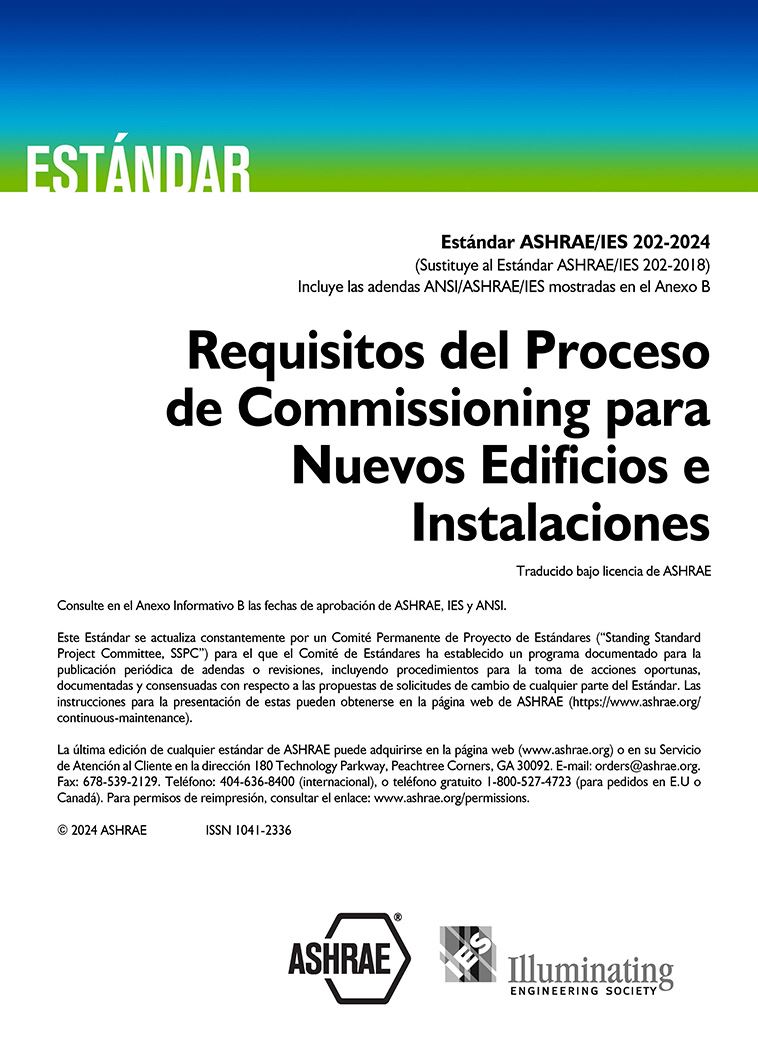
Standard 202-2024 - The Commissioning Process Requirements for New Buildings and New Systems
Standard 202 describes the overall minimum commissioning necessary to provide a uniform, integrated, and consistent approach for delivering projects and to provide information for operating facilities that meet the OPR. This standard also describes the general requirements for a training program for continued successful system and assembly performance. The revised 2024 edition of Standard 202 also includes clarification that the standard applies to new buildings and new systems within existing buildings, what the Construction Phase activity requirements are, and the Preliminary Cx Report vs. Final Cx Report; requirements for what the Cx Provider must provide for Owner review and acceptance when initiating Cx; and Ongoing Commissioning requirements related to new construction.
Available in Spanish or English
2013 translation also available
2018 translation also available
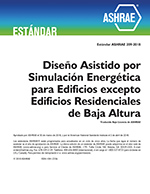
Standard 209-2018 -- Energy Simulation Aided Design for Buildings except Low-Rise Residential Buildings
ASHRAE Standard 209 describes a methodology to apply building energy modeling to the design. The standard was created to define reliable and consistent procedures that advance the use of timely energy modeling to quantify the impact of design decisions at the point in time at which they are being made.
Available in Spanish or English
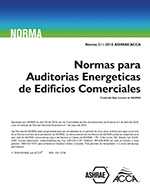
Standard 211-2018 -- Standard for Commercial Building Energy Audits
ASHRAE/ACCA Standard 211 establishes consistent practices for conducting and reporting energy audits for commercial buildings. The standard defines the procedures required to perform Energy Audit Levels 1, 2, and 3; provides a common scope of work for these audit levels for use by building owners and others; establishes consistent methodology and minimum rigor of analysis required; and establishes minimum reporting requirements for the results of energy audits.
Available in Spanish or English
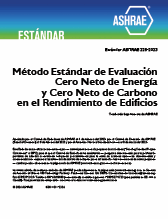
ASHRAE Standard 228-2023, Standard Method of Evaluating Zero Net Energy and Zero Net Carbon Building Performance
ASHRAE Standard 228 sets requirements for evaluating whether a building or group of buildings meets a definition of "zero net energy" or a definition of "zero net carbon" during building operation. Standard 228 draws from ASHRAE Standard 105, among others, to address energy and carbon flows across a site boundary, their measurement, and their balance. It includes allowances for sites that lack opportunity to produce adequate renewable energy, while placing additional requirements on the use of external carbon and renewable energy in the calculation. The standard defines the calculation of energy in terms of source - a multiplier on the energy crossing the site boundary to include energy used or lost in extraction, generation and transit to the site. The main energy calculation is made in terms of annual average factors, but allowance is made for the calculation of individual hours where data are available.
Available in Spanish or English
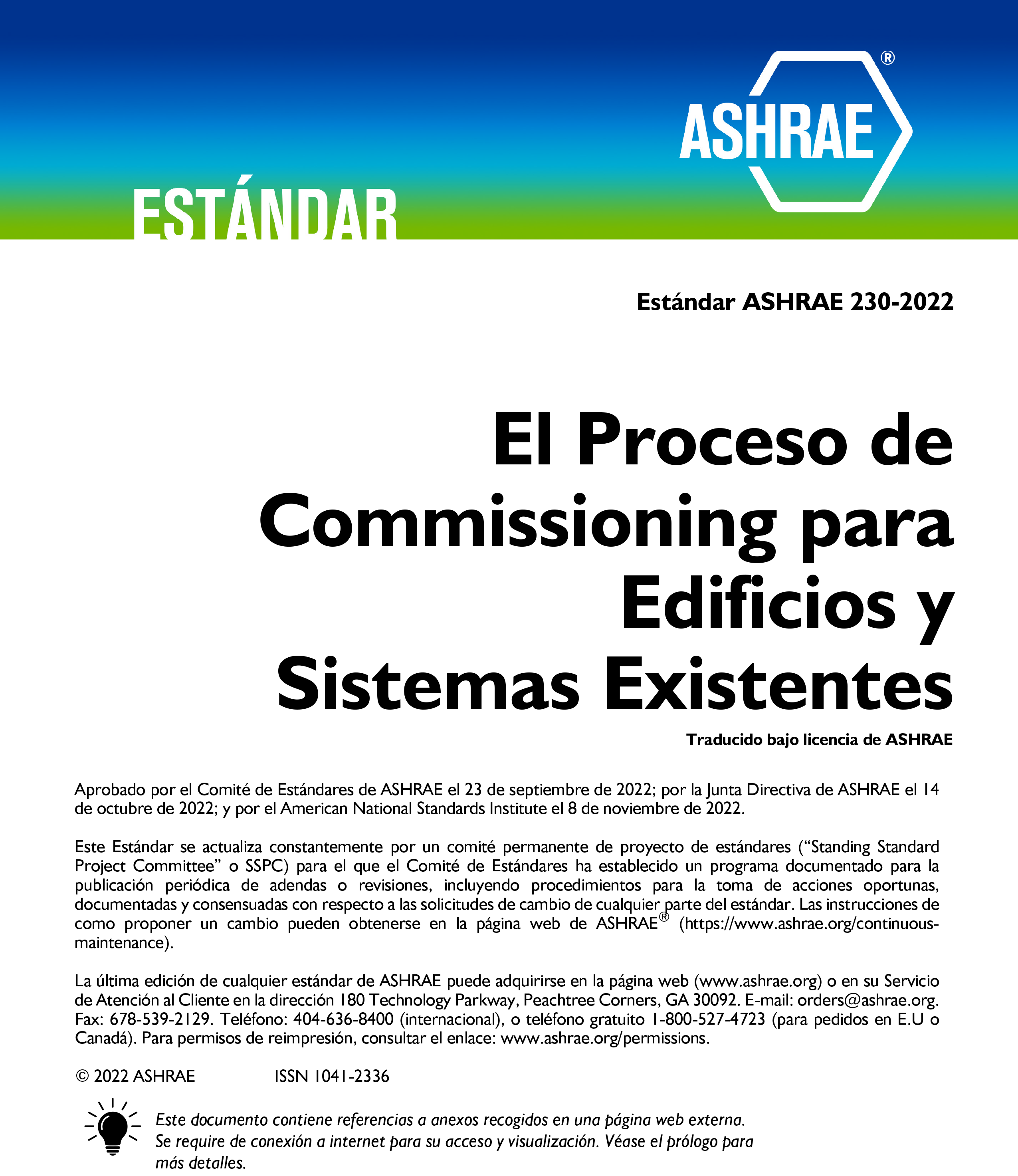
Standard 230-2022 - Commissioning Process for Existing Buildings and System
Standard 230 is an organized, quality-oriented process that establishes minimum requirements for commissioning an existing building and allows the owner to define the specific scope of work and project budget. This standard provides procedures, methods, and documentation requirements for each commissioning activity from planning to assessment, investigation, implementation, hand-off, and initial ongoing commissioning.
Available in Spanish or English
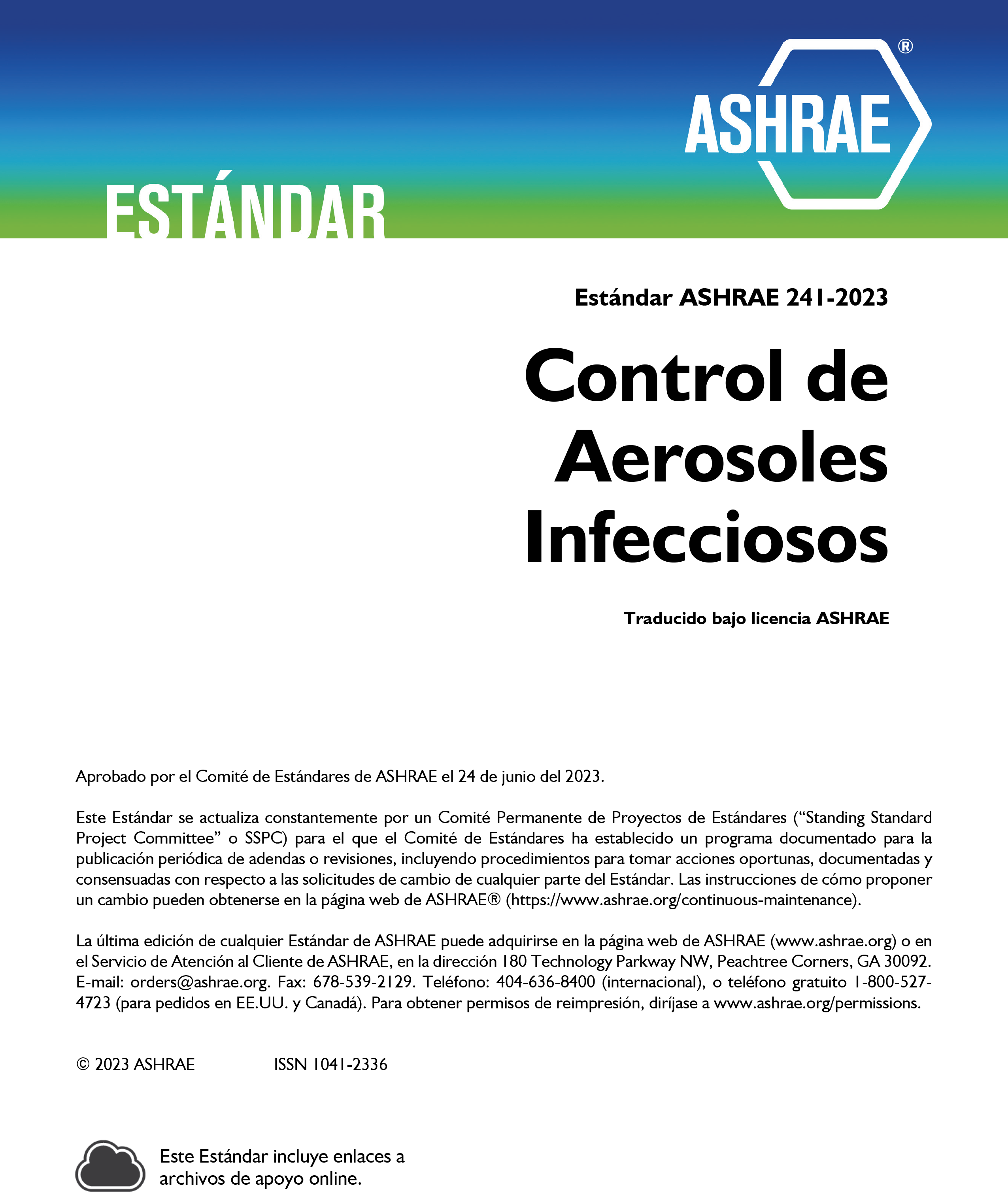
Standard 241-2023, Control of Infectious Aerosols
ASHRAE Standard 241 establishes minimum requirements for controlling infectious aerosols and reducing the risk of disease transmission in new and existing buildings. Included are requirements for both outdoor air system and air cleaning system design, installation, commissioning, operation, and maintenance to reduce exposure to infectious aerosols. This standard includes supplemental files in Microsoft Excel and Adobe Acrobat PDF format.
Available in Spanish or English
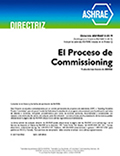
Guideline 0-2019 - The Commissioning Process
This guideline describes the Commissioning Process capable of verifying that a facility and its systems meet the Owner's Project Requirements.
Available in Spanish or English
2013 translation also available
2005 translation also available
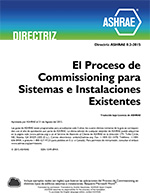
Guideline 0.2-2015 -- The Commissioning Process for Existing Systems and Assemblies
New ASHRAE Guideline 0.2-2015, Commissioning Process for Existing Building Systems and Assemblies, is the comprehensive description of a systematic quality-oriented process that improves the performance and sustainability of existing facilities..
Available in Spanish or English
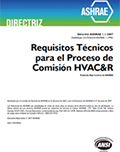
Guideline 1.1-2007 -- HVAC&R Technical Requirements for The Commissioning Process
Guideline 1.1-2007 represents a revision of ASHRAE Guideline 1-1996, which contained both general commissioning process requirements and HVAC technical requirements in one document.
Available in Spanish or English
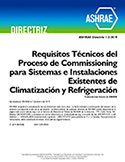
Guideline 1.2-2019, Technical Requirements for the Commissioning Process for Existing HVAC&R Systems and Assemblies
Guideline 1.2 provides requirements for the application of the Commissioning (Cx) Process described in ASHRAE Guideline 0.2 to existing heating, ventilating, air-conditioning, and refrigerating (HVAC&R) systems and assemblies.
This guideline is part of a larger collection of commissioning process documents from ASHRAE.
Available in Spanish or English
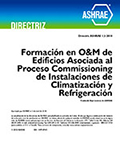
Guideline 1.3-2018, Building Operations and Maintenance Training for the HVAC&R Commissioning Process
Guideline 1.3 offers guidance on training O&M staff in all aspects related to commissioning, as outlined in ASHRAE Guideline 0.
Because well-trained building personnel can positively influence performance outcomes at every phase of a Cx project, Guideline 1.3 covers implementation strategies and methodologies for training O&M staff and owners, formats for developing training plans, tips on how to conduct training programs, and documenting training results.
This guideline is part of a larger collection of commissioning process documents from ASHRAE.
Available in Spanish or English
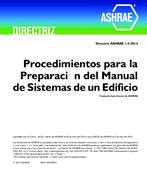
Guideline 1.4-2014 -- Procedures for Preparing Facility Systems Manuals
ASHRAE Guideline 1.4 provides guidance and procedures for producing a Systems Manual. The format and content of the Systems Manual provided in this guideline can be effectively used in both new construction and for an existing building, even if the building is not commissioned..
Available in Spanish or English
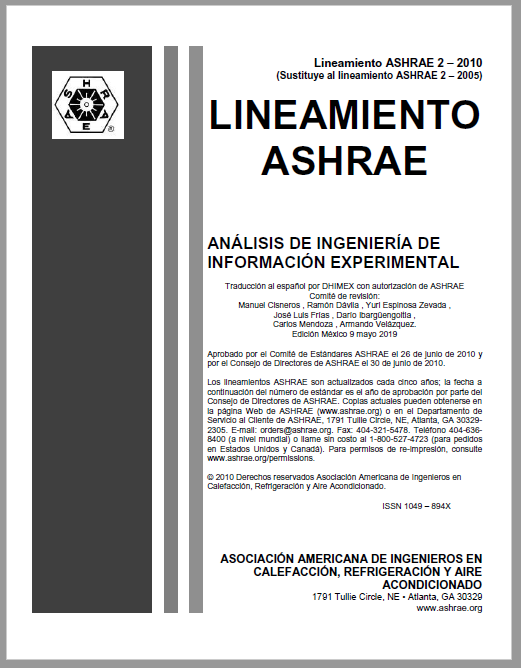
Guideline 2-2010, Engineering Analysis of Experimental Data
The purpose of this document is to provide guidelines for planning, analyzing data, and reporting the uncertainty of experiments. Appropriate terms are defined and statistically based procedures and formulae are recommended for evaluating experimental data related to HVAC&R. Numerous examples are provided to illustrate analysis of experimental data. Although this guideline addresses many of the ways in which statistics are used in HVAC&R applications, it should not be considered a comprehensive statistical text. An attempt has been made to provide sufficient background and references for the statistics used in this guideline.
Available in Spanish or English
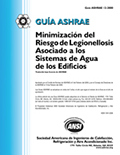
Guideline 12-2000 -- Minimizing the Risk of Legionellosis Associated with Building Water Systems
The purpose of this guideline is to provide information and guidance in order to minimize Legionella contamination in building water systems.
Available in Spanish or English
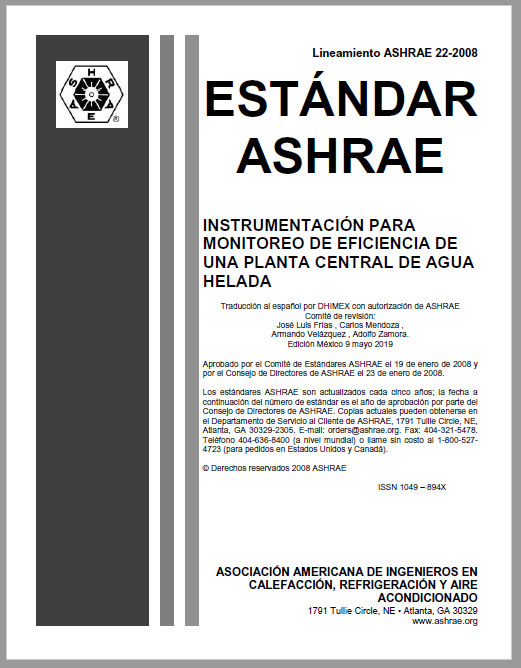
Guideline 22-2008, Instrumentation for Monitoring Central Chilled-Water Plant Efficiency
Guideline 22 provides information on the instrumentation and collection of data needed for monitoring the efficiency of an electric-motor-driven central chilled-water plant. A minimum level of instrumentation quality is established to ensure that the calculated results of chilled-water plant efficiency are reasonable. Several levels of instrumentation are developed so that the user can select that level that suits the needs of each installation. The basic purpose served by this guideline is to enable the user to continuously monitor chilled-water plant efficiency in order to aid in the operation and improvement of that particular chilled-water plant, not to establish a level of efficiency for all chilled-water plants.
Available in Spanish or English
| return to top
Position Documents, Epidemic Task Force Guidance, and Reports
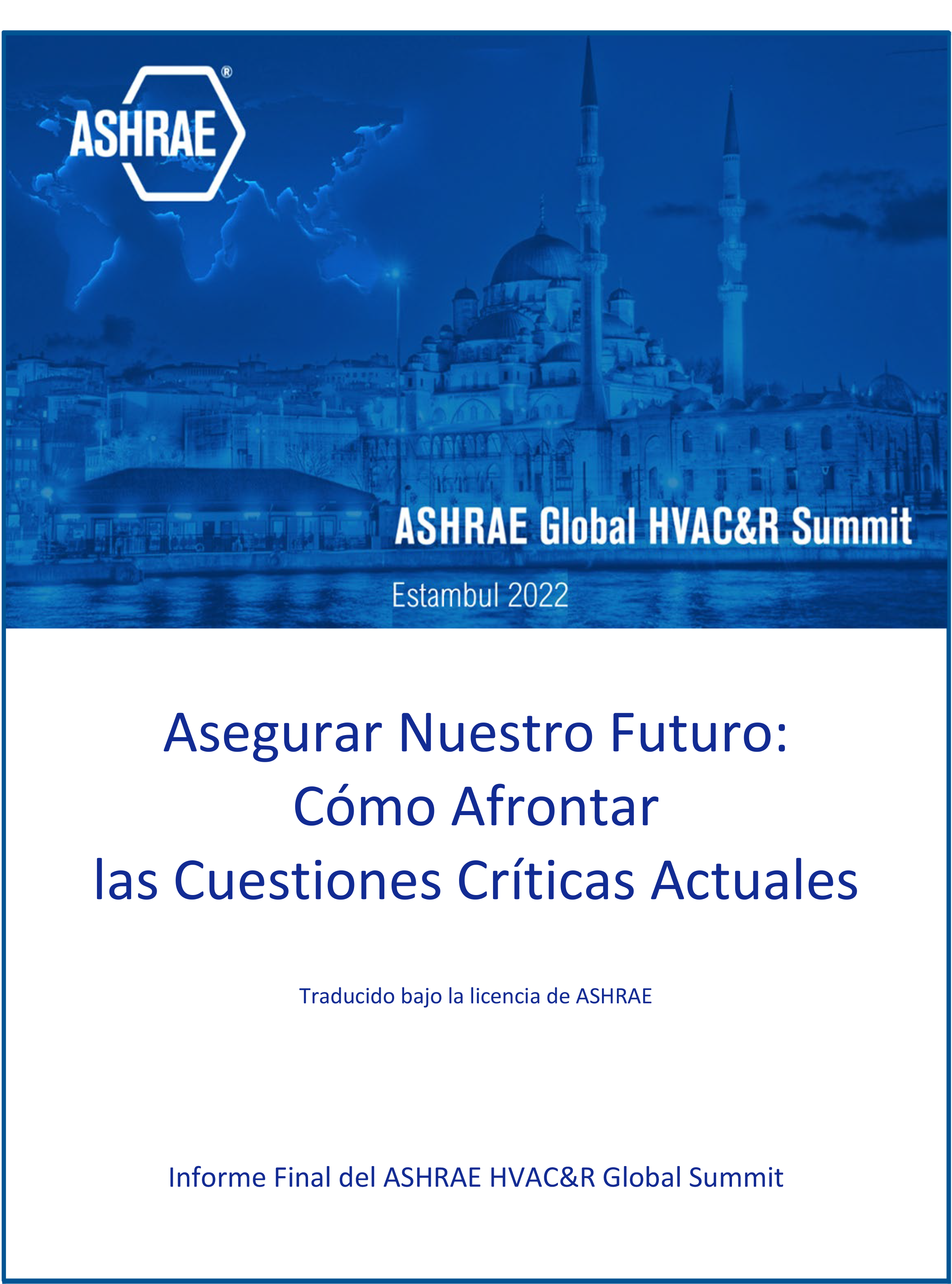
ASHRAE Global HVAC&R Summit Final Report
The ASHRAE Global HVAC&R Summit – a key element of 2022–2023 ASHRAE President Farooq Mehboob’s vision for his Society year theme, “Securing Our Future” – was designed to create an environment of collaboration and strategic dialogue to address the critical issues of the day, which were determined via the results of an international survey developed and distributed by the ASHRAE Associate Society Alliance (AASA).
Available in Spanish and English
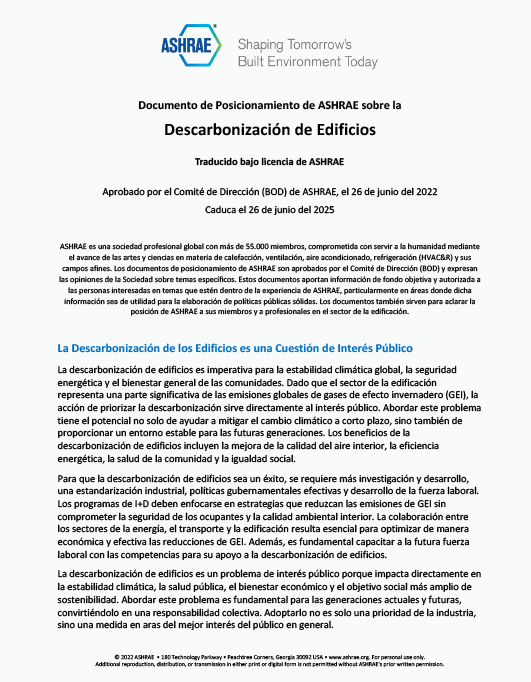
ASHRAE Position Document on Building Decarbonization
This position document recommends embracing building decarbonization strategies to reduce building greenhouse gas (GHG) emissions. Buildings provide many benefits to society but have a significant worldwide environmental impact due to their GHG emissions. The building industry accounts for roughly 40% of global GHGs, and the global building stock is expected to double by 2060. As society faces the challenge of mitigating climate change, ASHRAE’s position is that decarbonization of buildings and their systems must be based on a holistic analysis including healthy, safe, and comfortable environments; energy efficiency; environmental impacts; sustainability; operational security; and economics.
Available in Spanish. Access the most recently approved version of this position document in English on the Position Documents webpage.
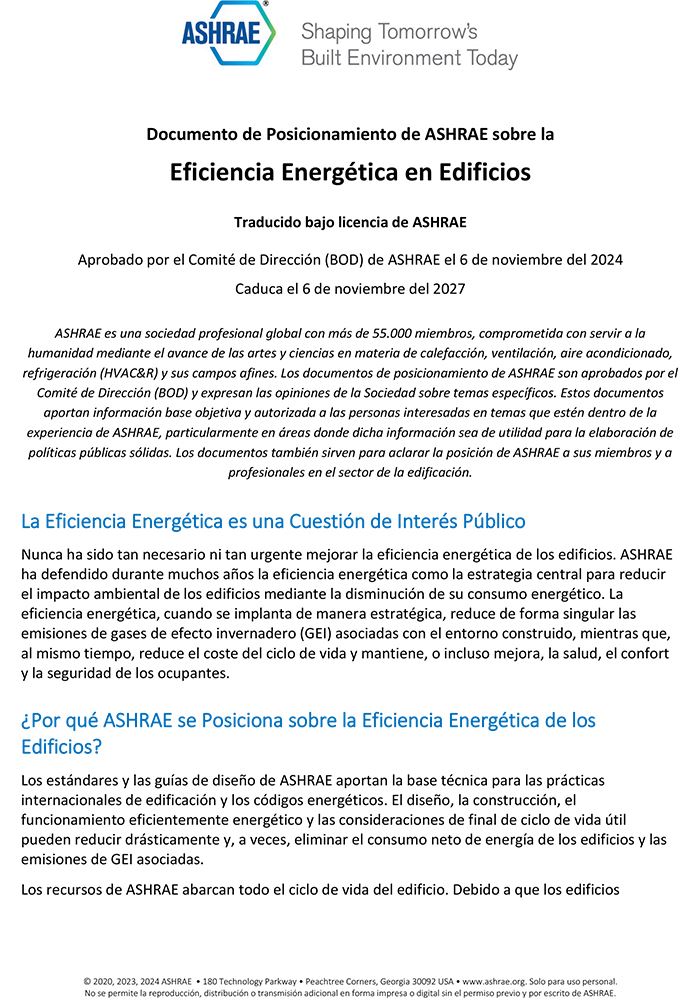
ASHRAE Position Document on Energy Efficiency in Buildings
ASHRAE has long advocated for energy efficiency as the central means for reducing the environmental impact of buildings through lowering their energy use. Energy efficiency, when implemented strategically, uniquely reduces greenhouse gas (GHG) emissions associated with the built environment while simultaneously reducing life-cycle costs and maintaining or improving occupant health, comfort, and safety. This position document outlines ASHRAE's positions on and recommendations for energy efficiency in buildings.
Available in Spanish. Access the most recently approved version of this position document in English on the Position Documents webpage.
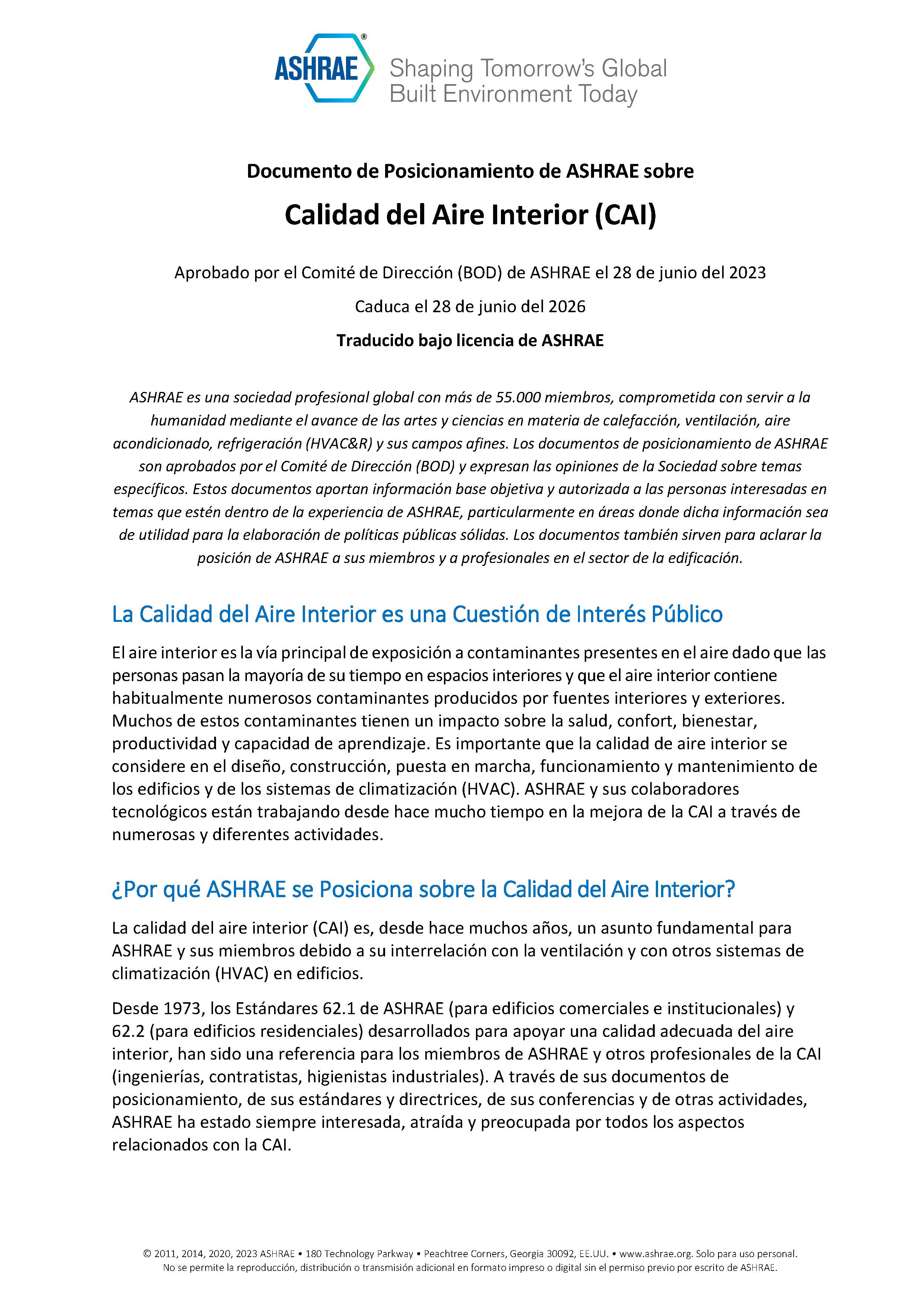
ASHRAE Position Document on Indoor Air Quality
Indoor air quality (IAQ) has long been a critical issue for ASHRAE and its members because of the connection to ventilation and other HVAC systems in buildings. Indoor air is the dominant pathway for exposure to airborne contaminants given that people spend the majority of their time indoors, and indoor air commonly contains numerous contaminants originating from both indoor and outdoor sources. Many of the contaminants impact health, comfort, well-being, learning outcomes and work performance. It is important that IAQ is considered in the design, construction and operation of buildings and HVAC systems. This position document presents the positions, recommendations, and commitments of ASHRAE regarding IAQ in the built environment.
Available in Spanish. Access the most recently approved version of this position document in English on the Position Documents webpage.
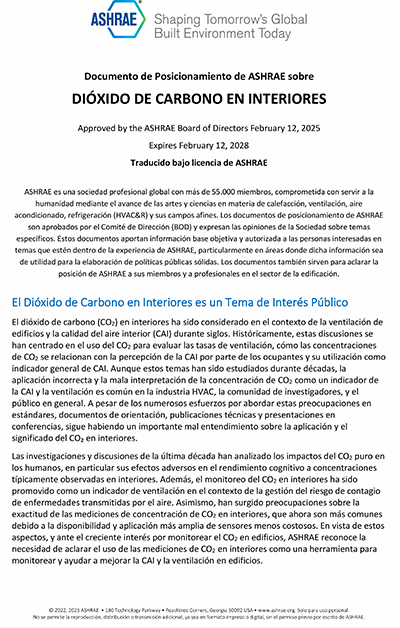
ASHRAE Position Document on Indoor Carbon Dioxide
Incorrect application and misinterpretation of carbon dioxide (CO2) concentration as an indicator of IAQ and ventilation is common in the HVAC industry, the research community, and the public. Research and discussions over the past decade have considered the impacts of pure CO2 on humans, in particular its adverse effects on cognitive performance, at commonly observed indoor concentrations. Indoor CO2 monitoring has also been promoted as a ventilation indicator in the context of managing the risks of airborne disease transmission. Additionally, concerns have long existed regarding the accuracy of indoor CO2 concentration measurements, which are now more common due to the availability and more widespread application of less expensive sensors. Given all of the above issues, as well as increasing calls to monitor CO2 in buildings, ASHRAE recognizes the need to clarify the use of indoor CO2 measurements as a tool to monitor and help improve IAQ and building ventilation.
Available in Spanish. Access the most recently approved version of this position document in English on the Position Documents webpage.
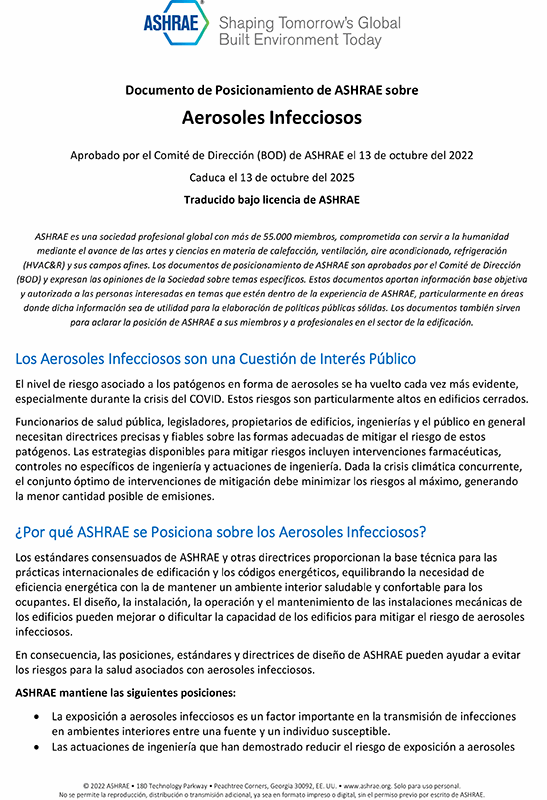
ASHRAE Position Document on Infectious Aerosols
The magnitude of risk from aerosolized pathogens has become increasingly obvious, especially during the COVID crisis. These risks are particularly elevated in enclosed buildings. Public-health officials, policymakers, building owners, designers, and members of the public all need accurate, reliable guidance for appropriate ways to mitigate the risk from these pathogens. ASHRAE consensus standards and other guidance provide the technical foundation for international building practices and energy codes that balance the need for energy efficiency with the need to keep the indoor environment healthy and comfortable for occupants. This position document provides the Society's positions, recommendations, and commitments on this topic.
Available in Spanish. Access the most recently approved version of this position document in English on the Position Documents webpage.
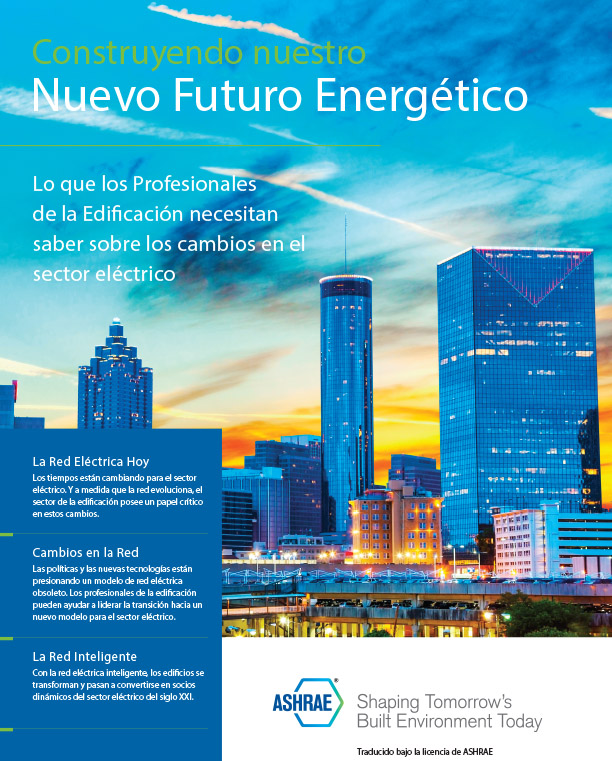
Building Our New Energy Future
This primer is tailored to prepare buildings professionals for the challenges and opportunities of designing efficient and grid-responsive buildings within the changing energy sector. It explores resources on topics such as distributed energy resources (DERs), electric vehicles and buildings, the Internet of Things (IoT), smart grids and buildings, the future of utilities, and high-performance building design.
Strategies to communicate about prioritizing loads, storing versus using energy, and advances in renewable energy are provided throughout the primer. It also shares how new practice areas and business opportunities for building professionals will emerge in this drive toward a more sustainable built environment.
The primer was developed for ASHRAE in collaboration with the American Institute of Architects (AIA), the National Institute of Building Sciences (NIBS), and the U.S. Department of Energy’s National Renewable Energy Laboratory (NREL).
Available in Spanish or English
ETF One-Page Guidance for the Re-Opening of Schools
Protecting the health, safety and welfare of the world’s students, faculty, and administrators from the spread of SARS-Cov-2 (the virus that causes the COVID-19 disease) is essential to protecting the entire population. ASHRAE’s full guidance for schools (in English) provides practical information and checklists to help minimize the chance of spreading SARS-CoV-2. This document is a one-page summary of key general recommendations related to HVAC and water supply systems. Many different HVAC system types are used in educational facilities, so adaptation of these guidelines to specific cases is necessary.
Available in Spanish or English
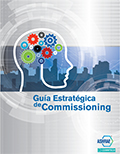
Strategic Guide to Commissioning
Report from the ASHRAE Presidential Ad-Hoc Committee, Building Performance Alliance on Commissioning, Presented to ASHRAE Board of Directors
June 24, 2014
Available in Spanish or English
| return to top
CDs and Software
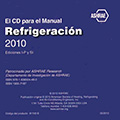
2010 ASHRAE Handbook - Refrigeration CD (I-P/SI), Spanish Edition
Developed in partnership with ACTECIR, this dual-unit CD-ROM covers refrigeration equipment and systems for applications other than human comfort. The CD is fully searchable, covering topics vital to food storage and transport, as well as many medical and industrial applications.
Learn more
| return to top